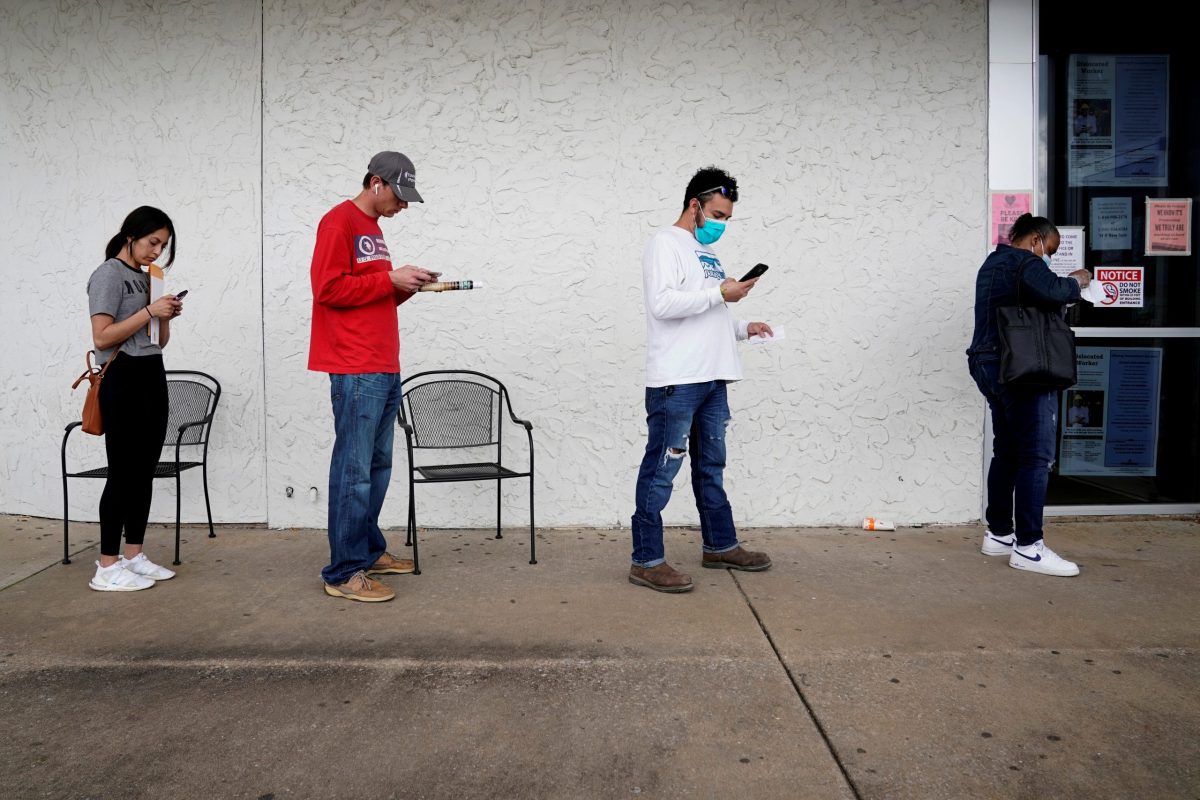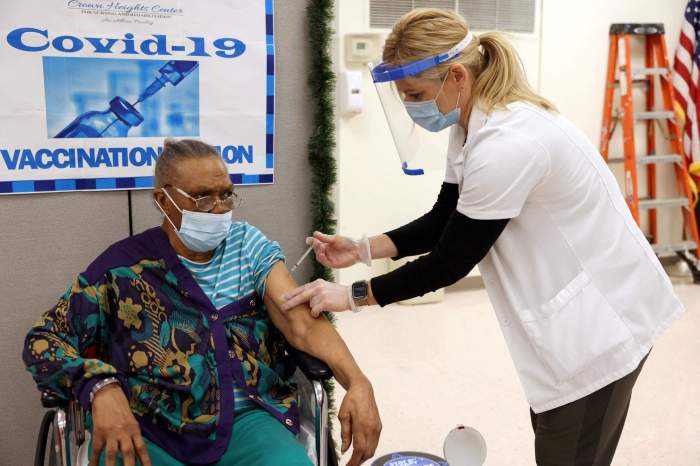BY LUCIA MUTIKANI
Millions more Americans sought unemployment benefits last week, suggesting layoffs broadened from consumer-facing industries to other segments of the economy and could remain elevated even as many parts of the country start to reopen.
The deepening economic crisis triggered by nationwide lockdowns to slow the spread of the novel coronavirus was underscored by other data on Thursday showing worker productivity fell at its fastest pace in more than four years in the first quarter amid the largest drop in hours since 2009.
The reports support economists’ expectations of a slow rebound in the economy after gross domestic product slumped in the first quarter at the steepest pace since the 2007-09 Great Recession. The economic rout could hurt President Donald Trump’s bid for a second term in the White House in November’s election.
Trump wants the country to reopen and restrictions imposed by states and local governments to control the spread of COVID-19, the respiratory illness caused by the virus, eased.
“The U.S. labor market is in the worst position since the Great Depression and is unlikely to improve sustainably anytime soon,” said Ron Temple, head of U.S. equities at Lazard Asset Management in New York. “Premature efforts to reopen economies undermine our progress in controlling the pandemic and risk extending the duration of the downturn.”
Initial jobless claims for state unemployment benefits totaled a seasonally adjusted 3.169 million for the week ended May 2. Data for the prior week was revised to show 7,000 more applications received than previously reported, taking the tally for that period to 3.846 million. Economists polled by Reuters had forecast 3.0 million claims for the latest week.
It was the fifth straight weekly decrease in applications since the record 6.867 million in the week ended March 28. Florida accounted for about 40% of the decline in claims last week, which some economists attributed to difficulties processing applications. There were also big drops in filings in Georgia, Pennsylvania, Alabama, New York and Washington state.
Still, the latest numbers lifted to about 33.5 million the number of people who have filed claims for unemployment benefits since March 21, equivalent to roughly one out of every five workers losing their job in just over a month.
“The pace of new claims for unemployment is slowing, but remains at levels unimaginable just a few months ago,” said Joel Naroff, chief economist at Naroff Economics in Holland, Pennsylvania. “Even with the economy slowly starting to reopen, the number of unemployed should continue to rise sharply as governments, as well as businesses that have tried but not succeeded at holding the line, are now laying off workers.”
In another report on Thursday, the Labor Department said nonfarm productivity, which measures hourly output per worker, decreased at a 2.5% annualized rate in the first quarter. That was the largest decline since the fourth quarter of 2015 and followed a 1.2% pace of increase in the fourth quarter.
Hours worked tumbled at a 3.8% rate last quarter, the sharpest decline since the third quarter of 2009. Hours worked increased at a 1.2% rate in the fourth quarter.
Stocks on Wall Street were trading higher as investors focused on a surprise rise in Chinese exports and a surge in oil prices. The dollar firmed against a basket of currencies. U.S. Treasury prices rose.
Employment report awaited
Thursday’s weekly claims data will have no impact on the Labor Department’s comprehensive employment report for April, which is scheduled to be released on Friday, as it falls outside the period during which the government surveyed establishments and households for its monthly report. A survey on Wednesday showed private payrolls fell by a record 20.2 million in April.
According to a Reuters survey of economists, nonfarm payrolls are forecast to have plunged by a historic 22 million in April, which would blow away the record dive of 800,000 seen during the 2007-2009 recession. Employment dropped by 701,000 jobs in March, ending a record streak of gains dating to September 2010.
The unemployment rate is seen jumping to 16% in April, which would shatter the post-World War Two record of 10.8% touched in November 1982. The jobless rate in March shot up 0.9 percentage point to 4.4%, the largest monthly change since January 1975.
April could, however, mark the trough in job losses as more small businesses access their portion of an almost $3 trillion fiscal package, which made provisions for them to get loans that could be partially forgiven if they were used for employee salaries. At least 30 states are partially reopening, which could see some of the unemployed going back to work.
“We lost a lot of jobs all at once, but we will be regaining a lot of jobs all at once too as large companies reopen,” Labor Secretary Eugene Scalia said on Fox Business Network.
The claims report also showed the number of people receiving benefits after an initial week of aid surged 4.636 million to a record 22.647 million in the week ended April 25. The so-called continuing claims data is reported with a one-week lag and will be closely watched in the coming months to get a better sense of the depth of the labor market downturn.
The Labor Department also reported that nearly a million people had their applications for Pandemic Unemployment Assistance (PUA) processed in the week ending April 18.
The PUA program covers gig workers and many others who do not qualify for regular insurance unemployment, but have been forced out of work because of COVID-19. Another 1.4 million workers have sought benefits under this program since April 18.
































